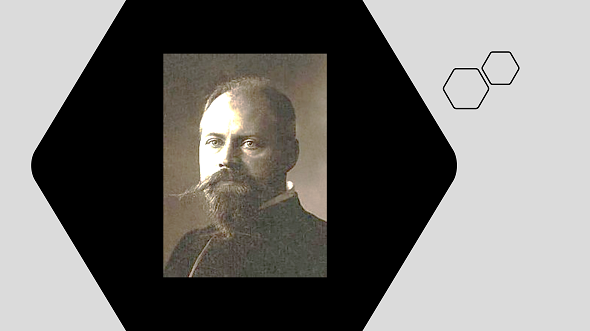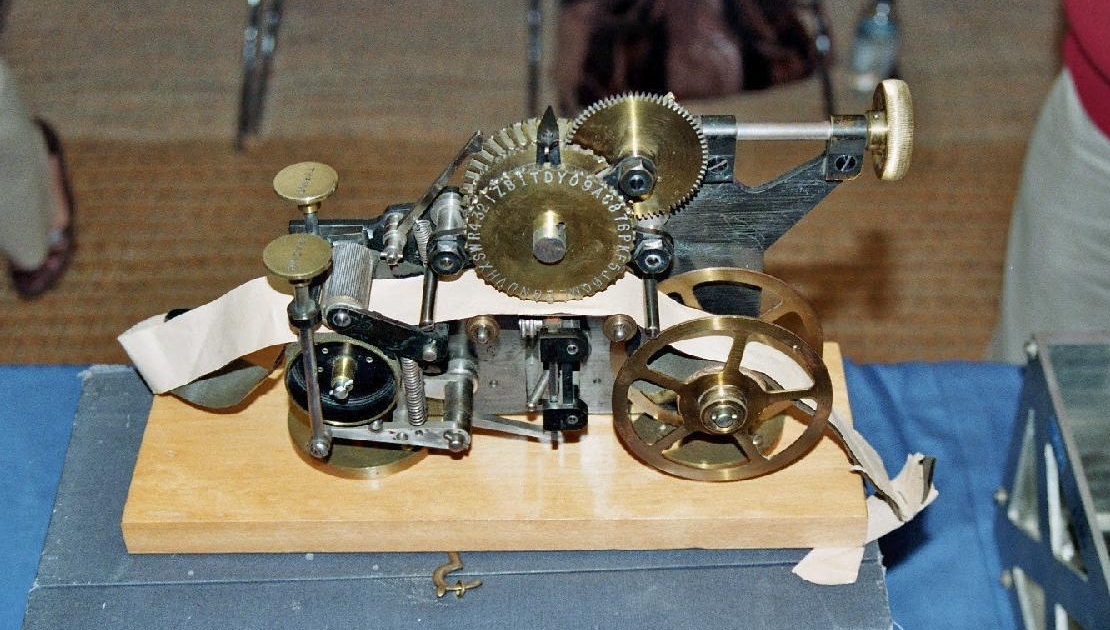The encryption machine of a Swiss aviation pioneer
A description of an encryption machine built by the Swiss aviation pioneer Alexander Liwentaal has survived from 1910. Can my readers help to find out more about this device?
Before getting to the actual topic, I would like to mention that blog reader Thomas Bosbach managed to find out the meaning of the term “San Felipe” in the coded dispatch from 1812 that I blogged about recently. According to it, San Felipe is a fortress conquered by the Spanish near Mahon on Menorca.
Karsten Hansky, the owner of the dispatch, then thankfully updated his (extremely detailed paper) on this letter. It is available in German and in English. In said blog article, I have changed the links to Karsten’s work accordingly. Once again, I am proud that my blog has served as a platform for interesting research.
The encryption engine mentioned by Kipling
Let’s move on to another blog article I published a few days ago. On July 2, 2021, I blogged about the writer Rudyard Kipling and his penchant for cryptology. In particular, it was about a cryptogram hidden in one of his romae that has yet to be found. My source was the recent article “Rudyard Kipling’s unsolved cryptogram” by Roger J. Morgan in the journal Cryptologia. I subsequently informed Morgan of my blog post, and we exchanged a few interesting emails.
However, I deliberately did not mention one topic from Morgan’s Cryptologia article because I wanted to write a separate blog post about it – which I am doing herewith. As Morgan reports, in 1910 Kipling mentioned an encryption machine in a letter to his son:
A little thing like a baby typewriting machine, only not much bigger than a Kodak which could transmit messages in cypher that no one could read and then translate the cypher back into plain English. The machine itself changes the cypher all the time it goes on.
So the encryption machine described had the following features:
- It looked like a small typewriter. I assume that Kipling was thinking of a device with a keyboard as we know it today. However, at that time there were also so-called index typewriters, which had only one key, and the letter to be printed had to be set with a slide or wheel. By “Kodak,” Kipling probably meant a camera.
- Since the machine “changed the cipher itself,” it was probably a polyalphabetic cipher. It probably had a rotor, gear, or similar component that rotated after each encoded letter.
Polyalphabetic cipher machines with keyboards were not too numerous in 1910, as the era of such devices did not begin until after World War I. So it would be interesting to know what kind of device Kipling saw at that time.
Alexander Liwentaal
The said letter from Kipling to his son is mentioned on a website, which also gives some background information about the said encryption machine. Apparently, the device was constructed by a Swiss named Alexander Liwentaal (1868-1940), who otherwise rather attracted attention as an aviation pioneer.
I found two sources about Liwentaal: a Wikipedia article in Estonian and an entry in the Historical Dictionary of Switzerland from 2006. These sources tell us that Liwentaal’s father came from Estonia. He himself was born in Lausanne (Switzerland), studied in Paris and later emigrated to Canada.
Among other things, Liwentaal crossed the Alps in a balloon and made flight attempts with a glider. He was involved in the construction of airplanes and airships. Liwentaal worked in about 20 industries, including the automotive and defense industries. Liwentaal also dabbled in cryptology, according to the Histoisches Lexikon der Schweiz, though I have found no further information on this.
Liwentaal filed several patents during his life, most of them relating to aeronautical technology. I could not find a patent on encryption technology from him, however.
Other encryption machines from this time
Let’s take a look at two other encryption machines from the period in question. The following picture shows the Rehmann Diskret from Germany, which was first available in 1899. It is an index typewriter with a monoalphabetic encryption function:
The following picture shows the encryption machine of the British General Percy Scott, which was created before the First World War. It, too, works on the principle of an index typewriter, but encrypts polyalphabetically (by means of a wheel that rotates by one unit with each letter printed):
The two devices shown probably have nothing to do with the Liwentaal machine, but give an impression of the cipher technology of the time.
Does a reader know more?
That’s all I know so far about Liwentaal and his crypto activities. If any reader can find out more, I would be very interested. In particular, of course, additional information about his encryption engine would be of interest. I’m afraid, however, that you’re looking for a needle in a haystack here, because Liwentaal apparently did quite a lot during his life, and only a small part of it had to do with encryption.
In any case, I’d be glad to get any hints of any kind.
If you want to add a comment, you need to add it to the German version here.
Follow @KlausSchmeh
Further reading: Virtueller Nachbau einer Verschlüsselungmaschine, die nie gebaut wurde
Linkedin: https://www.linkedin.com/groups/13501820
Facebook: https://www.facebook.com/groups/763282653806483/






Letzte Kommentare